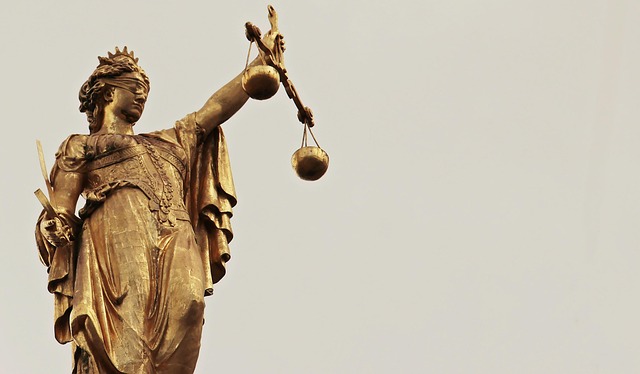Uncovering Key Personal Injury Evidence: Medical Records Matter

In personal injury cases, medical records are paramount evidence that detail injuries, diagnoses, an…….
Personal injury evidence is a critical component of legal proceedings, serving as the foundation for determining liability, assessing damages, and ensuring justice for individuals who have suffered harm due to another party’s negligence or intentional acts. This comprehensive article delves into the multifaceted world of personal injury evidence, exploring its historical roots, global impact, economic implications, technological innovations, regulatory frameworks, challenges, and future prospects. By examining these various facets, readers will gain a profound understanding of how personal injury evidence shapes legal outcomes and influences societal perceptions of accountability and compensation.
Definition: Personal injury evidence refers to the documentation, testimony, and physical manifestations that establish the existence, extent, and causation of injuries suffered by an individual in a non-fatal accident or incident. It encompasses medical records, eyewitness accounts, expert opinions, photographs, and other relevant data that help courts and juries reach fair and accurate decisions.
Core Components:
Medical Records: These are comprehensive documents detailing the patient’s history, diagnosis, treatment plan, and prognosis. They include reports from physicians, surgeons, specialists, hospitals, and rehabilitation centers. Medical records provide concrete evidence of injuries and their impact on the victim’s physical and mental well-being.
Eyewitness Testimony: Firsthand accounts from witnesses who observed the incident play a crucial role. Their descriptions can corroborate or challenge the victim’s version of events, providing insights into liability and the sequence of occurrences.
Expert Opinions: Specialized professionals like medical experts, accident reconstructionists, and economic analysts offer expert opinions to explain complex matters. For instance, a medical expert might opine on the severity of injuries or the standard of care expected from healthcare providers.
Photographic Evidence: Photographs of injuries, accident scenes, and relevant objects can convey powerful visual information. They may depict physical wounds, vehicle damage, or environmental factors that contributed to the injury.
Video Footage: Surveillance videos, security camera footage, or mobile phone recordings can provide a dynamic view of incidents, aiding in understanding the context and actions leading up to the personal injury.
Historical Context: The concept of personal injury evidence has evolved over centuries, reflecting changes in legal systems and societal values. Historically, court proceedings relied heavily on verbal testimony, often with limited medical expertise. However, as society became more aware of individual rights and the need for precise justice, the emphasis shifted towards documentary evidence and expert opinions. This evolution continues with technological advancements that facilitate data collection, storage, and retrieval.
Personal injury evidence transcends borders, influencing legal practices and societal attitudes worldwide. Several key trends shape its global landscape:
| Region | Trending Developments | Impact |
|---|---|---|
| North America | Increased use of electronic medical records and digital evidence collection tools | Enhances efficiency and accessibility but raises privacy concerns |
| Europe | Stricter regulations on data protection and patient consent | Ensures patient privacy while facilitating cross-border legal cooperation |
| Asia Pacific | Rapid adoption of technology, including artificial intelligence (AI) for evidence analysis | Potentially improves accuracy but requires rigorous testing and ethical considerations |
| Middle East | Growing emphasis on alternative dispute resolution (ADR) methods | Promotes efficiency and cost savings while maintaining legal integrity |
Different regions face unique challenges and embrace innovative solutions. For instance, North America’s digital transformation has streamlined evidence collection but sparked debates around patient data privacy. In contrast, Europe’s stringent data protection laws set a global standard for patient rights. As technology advances, AI-driven evidence analysis emerges as a promising yet controversial trend across various jurisdictions.
The economic aspects of personal injury evidence are multifaceted and have significant implications for individuals, businesses, and economies at large.
Market Dynamics: Legal services related to personal injury claims form a substantial market, with varying levels of demand based on regional accident rates, insurance coverage, and legal frameworks. This dynamic market influences the pricing of legal services and the resources allocated towards evidence collection and analysis.
Investment Patterns: Individuals and entities involved in high-risk industries or prone to personal injuries invest heavily in risk management strategies, including comprehensive insurance policies and advanced safety measures. These investments are driven by the potential financial burden of personal injury claims.
Economic Impact on Systems: Personal injury evidence plays a critical role in economic systems by:
Technology has revolutionized the way personal injury evidence is gathered, analyzed, and presented in court. Notable advancements include:
Digital Imaging and Photography: High-resolution cameras and advanced editing software enable detailed documentation of injuries and scenes, enhancing visual impact during trials.
Electronic Medical Records (EMRs): Digital health records streamline access to patient histories, improving the accuracy and speed of evidence collection. EMRs also facilitate remote consultations, benefiting both victims and healthcare providers involved in legal proceedings.
Video Analysis Software: Advanced algorithms can analyze video footage for critical details, such as identifying collision sequences or tracking movements, providing valuable insights for accident reconstruction.
Artificial Intelligence (AI): AI-driven systems assist in reviewing vast amounts of data, including medical records and legal documents, to identify patterns, potential discrepancies, or areas requiring further investigation. AI can also predict outcomes based on historical data, offering valuable insights to both parties.
Blockchain Technology: This decentralized system offers enhanced security and transparency for digital evidence. Blockchain ensures the integrity of data, making it harder to tamper with or manipulate, thereby strengthening the reliability of personal injury evidence.
Key policies and regulations govern the collection, admissibility, and handling of personal injury evidence, ensuring fairness, confidentiality, and accountability in legal processes.
Privacy Laws: Data protection laws, such as the General Data Protection Regulation (GDPR) in Europe, dictate how personal information, including medical records, can be collected, stored, and shared. These laws empower individuals to control their data while ensuring organizations handle data securely.
Discovery Rules: Legal discovery processes govern the exchange of evidence between opposing parties. Rules vary by jurisdiction but generally require disclosure of relevant documents, witness statements, and expert reports to ensure a level playing field during litigation.
Expert Testimony Regulations: Many countries have guidelines for qualifying and regulating expert witnesses to maintain the integrity of their opinions. These regulations ensure that experts possess the necessary qualifications, methods, and standards to provide reliable testimony.
Ethical Guidelines for Evidence Collection: Organizations involved in evidence collection, including law enforcement and insurance companies, adhere to ethical guidelines. These guidelines protect individuals’ rights, promote transparency, and prevent coercion or misconduct during evidence gathering.
Despite significant advancements, personal injury evidence faces several challenges and criticisms that hinder its effectiveness and impact on legal outcomes. Addressing these issues is crucial to ensuring fairness, accuracy, and public trust in the justice system.
Solution: Implementing standardized assessment tools and training programs for healthcare providers and legal professionals can minimize bias. Encouraging objective reporting and using multiple data sources can provide a more comprehensive view of harm.
Solution: Strict adherence to robust cybersecurity measures, regular system audits, and employee training are essential. Utilizing blockchain technology and secure cloud storage solutions enhances data protection.
Solution: Governments and legal organizations should invest in providing technological resources and training to ensure equal access. Subsidies or grants for legal aid institutions can help bridge the gap.
Solution: Continuous education and training for judges and legal professionals are necessary to stay informed about new technologies. Establishing clear guidelines and protocols for authenticating digital evidence can streamline the process.
A young woman, Sarah, was involved in a car accident caused by a defective brake system. Her medical records, meticulously documented over several years, played a pivotal role in her personal injury claim. These records detailed her pre-existing conditions and demonstrated how the accident exacerbated her health issues. The insurance company initially disputed her claim, but upon reviewing the extensive medical documentation, they settled out of court, recognizing the severity of Sarah’s injuries and their long-term impact.
Lessons Learned: Comprehensive medical documentation provides a clear and compelling narrative of an individual’s injuries and their progression. It helps in securing fair compensation, especially when coupled with expert medical opinions.
A manufacturer faced numerous product liability claims related to defects in its power tools. The company retained a specialized video analysis team to review footage of accidents involving their products. Through frame-by-frame analysis and motion capture, they identified design flaws that contributed to the incidents. This evidence was crucial in settling several cases and prompted the company to redesign its product lines, significantly reducing future incidents.
Lessons Learned: Video analysis offers powerful visual evidence, especially in complex product liability cases. It can reveal critical details about product performance and user interactions, aiding in identifying design or manufacturing defects.
In a medical malpractice case, a patient sought compensation for permanent paralysis allegedly caused by a doctor’s negligence during surgery. The patient’s attorney retained a renowned neurologist as an expert witness. The expert testified about the standard of care expected from the surgeon and explained the causation between the doctor’s actions and the patient’s injuries. This testimony, supported by extensive medical literature, played a pivotal role in securing a substantial settlement.
Lessons Learned: Expert testimony is a powerful tool for establishing liability in complex cases. When experts possess relevant expertise and adhere to rigorous methodologies, their opinions carry significant weight in court.
The future of personal injury evidence promises exciting possibilities as technology continues to evolve and legal systems adapt to changing societal needs. Several growth areas and emerging trends shape its trajectory:
Advanced Data Analytics: AI and machine learning algorithms will increasingly analyze vast datasets, identifying patterns, trends, and correlations related to personal injuries. This predictive capability can aid in risk assessment, accident reconstruction, and personalized treatment plans.
Virtual Reality (VR) and Augmented Reality (AR): VR and AR technologies offer immersive experiences, allowing judges, lawyers, and juries to visually explore accident scenes, medical conditions, or rehabilitation processes. This interactive approach can enhance understanding and decision-making.
Genomics and Personalized Medicine: Advancements in genomics may lead to more precise assessments of injury severity and treatment outcomes. Personalized medicine approaches could tailor compensation packages based on individual genetic factors, ensuring fairer and more effective remedies.
Global Legal Collaboration: With increasing globalization, cross-border personal injury cases will become more common. This trend necessitates enhanced international legal collaboration and the development of harmonized standards for evidence admissibility and recognition.
Personal injury evidence is a complex and critical aspect of legal systems worldwide, shaping outcomes in personal injury claims and influencing societal perceptions of accountability and compensation. As technology advances and legal landscapes evolve, understanding and effectively managing this evidence type becomes increasingly vital. From medical records to expert opinions and digital imaging, the tools at lawyers’ disposal continue to refine the process, ensuring justice is served while maintaining public trust.
Q: How does personal injury evidence differ from criminal evidence?
A: While both types of evidence are essential for legal proceedings, they serve different purposes. Personal injury evidence focuses on establishing liability and compensation for non-fatal accidents or incidents. In contrast, criminal evidence is used to prove guilt or innocence in criminal cases, with higher standards of proof required.
Q: What role does technology play in enhancing personal injury evidence?
A: Technology revolutionizes personal injury evidence by improving data collection, analysis, and presentation. Digital imaging, EMRs, video analysis software, AI, and blockchain all contribute to making evidence more accessible, accurate, and reliable, ultimately strengthening legal cases.
Q: Can personal injury claims be successful without medical records?
A: Medical records are typically essential for personal injury claims, especially when injuries involve complex diagnoses or ongoing treatment. While exceptions may exist, such as minor injuries with clear causation, having comprehensive medical documentation significantly strengthens a claimant’s case.
Q: How can individuals protect their privacy while sharing sensitive information for personal injury evidence?
A: Individuals should familiarize themselves with data protection laws and share only necessary information with trusted professionals. Reviewing privacy policies of healthcare providers and legal firms is crucial. Utilizing secure communication channels and encryption for sensitive data exchange also enhances privacy protections.

In personal injury cases, medical records are paramount evidence that detail injuries, diagnoses, an…….

Effective storage and preservation of digital personal injury evidence are vital for its admissibili…….

In personal injury cases, swift action is key. Documenting physical injuries with clear photos and d…….

Surveillance footage has emerged as a game-changer for personal injury cases, offering robust and un…….

Personal injury claims rely on key documents like medical records, police reports, employment record…….

Gathering robust personal injury evidence is paramount in slip and fall cases. This includes immedia…….

Expert testimony is paramount in personal injury cases due to its ability to simplify complex eviden…….

In complex personal injury cases with long-term implications like caregiver negligence or employment…….

Personal injury evidence, comprising medical records, expert testimonies, police reports, photos, an…….

The legal chain of custody for personal injury evidence is vital for ensuring evidence integrity and…….